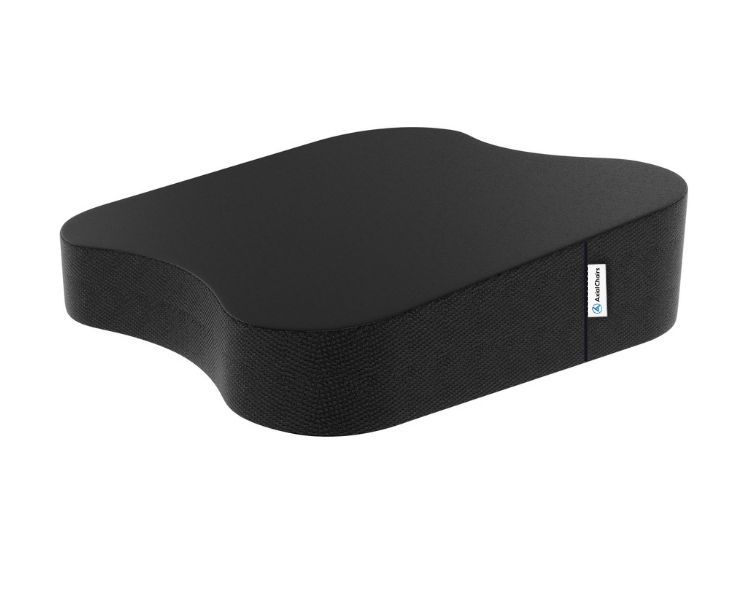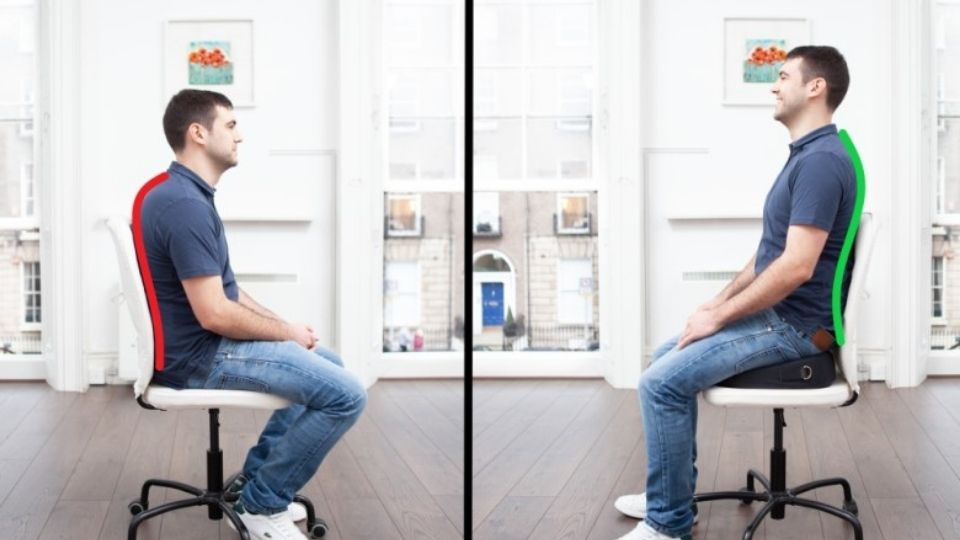For many of us, back pain is something that we simply consider a regular part of our lives. In fact, an estimated 8 out of 10 people experience lower back pain at some point in their lives. Unfortunately, for those who are living with acute or chronic back pain, it can mean that doing the simplest tasks throughout the day can come to a standstill. Do you wake up each morning with this dreaded feeling? We understand how difficult it can be to manage life through chronic and persistent back pain – but there is hope. You don’t have to just deal anymore! In this blog post, we explore potential causes and treatments for those suffering from years of back discomforting – helping you take control so you can get your life moving again!
As a general rule, chronic back pain for years can be caused by various factors such as muscle strain, herniated discs, spinal stenosis, arthritis or scoliosis. It is estimated that 80% of the population will experience back pain in their lifetime, while 20% of patients are responsible for 80% of the costs of treating this condition.
Back pain is a widespread problem that affects many office workers. As someone who has been practicing chiropractic for over three decades and has also trained as an ergonomist, I have a wealth of knowledge and experience that can help. I have written a book on posture, spoken on national TV about this topic, and designed products to help people improve their posture and comfort while sitting. Recently, I even launched a successful Kickstarter campaign to fund the development of a set of ergonomic seat cushions.
The Causes of Chronic Back Pain
Chronic back pain is a widespread issue, affecting millions of people globally. There are several possible causes of long-lasting back pain, such as muscle strain, disc problems, joint dysfunction, and various spinal conditions. Identifying the root cause of your back pain is crucial in determining the most effective treatment plan.
The Importance of Posture and Ergonomics
Poor posture and inadequate ergonomics can exacerbate or even cause chronic back pain. Prolonged sitting or standing in an improper position puts undue stress on your spine and surrounding muscles. Ensuring that you maintain good posture and make use of ergonomic furniture and equipment can help alleviate chronic back pain and prevent further discomfort.
All Day Comfort & Support
The Role of Exercise and Stretching
Regular exercise and stretching can play a significant role in managing chronic back pain. Strengthening your core and back muscles will provide better support for your spine, while stretching can help maintain flexibility and reduce muscle tension. It’s essential to consult with a healthcare professional or chiropractor before beginning any exercise program to ensure you’re engaging in activities that will benefit your specific condition.
Chiropractic Care and Chronic Back Pain
Chiropractic care can be an effective treatment option for those suffering from chronic back pain. As a chiropractor, I focus on the diagnosis and treatment of musculoskeletal conditions, including back pain. Through spinal adjustments, soft tissue therapy, and various other techniques, chiropractic care can help improve spinal alignment, alleviate pain, and increase mobility.
The Power of a Holistic Approach
Treating chronic back pain often requires a holistic approach, encompassing various treatment modalities and lifestyle changes. In addition to chiropractic care, other therapies such as massage, acupuncture, and physical therapy can complement and enhance your healing journey. Additionally, focusing on a balanced diet, stress reduction techniques, and getting proper sleep can significantly impact your overall well-being and pain management.
I’ve written a complete hands-on review about the best sitting position for sciatica, and here is what I tested best with my sciatica patients.
Living With Chronic Back Pain Every Day
Living with chronic back pain every day can be challenging, but there are ways to manage the pain and maintain a good quality of life. This may involve a combination of physical therapy, medication, heat/cold therapy, and lifestyle changes. It’s essential to stay in regular contact with your healthcare provider to tailor your pain management plan to your specific needs.
How I Cured My Lower Back Spine Pain
Curing lower back spine pain often depends on the underlying cause. In my case, I focused on strengthening my core muscles, practicing proper posture, and engaging in regular stretching and exercise. I also consulted with a healthcare professional to develop a personalized treatment plan that included physical therapy and, in some cases, medication. Your own journey to recovery may differ, so it’s important to work closely with your healthcare provider to identify the best course of action.
Causes of Back Pain in Females: Essential Information
There are various causes of back pain in females, including hormonal changes, poor posture, muscle imbalances, and structural issues in the spine. Other factors, such as pregnancy, obesity, stress, and aging, can also contribute to back pain. Understanding the root cause of the pain is crucial for developing an effective treatment plan. Consult a healthcare professional for a proper diagnosis and treatment options.
Navigating Life with Chronic Back Pain
Managing chronic back pain involves a multidisciplinary approach. This may include a combination of physical therapy, medication, complementary therapies (such as acupuncture or massage), and lifestyle changes. It’s important to stay proactive in your pain management and work closely with your healthcare team. This might involve regularly updating your treatment plan, staying active, maintaining a healthy weight, and practicing good posture and ergonomics.
Enduring Lower Back Pain for Months: My Journey
In my journey with lower back pain, I tried various treatments to find relief. I initially tried over-the-counter pain medications and hot/cold therapy but found limited success. After consulting with a healthcare professional, I started a physical therapy regimen, focusing on stretching and strengthening exercises. It took several months, but gradually, my pain subsided. It’s important to remember that each person’s experience with lower back pain is different, and finding the right combination of treatments may take time and patience.
Best Seat Cushion for Back Pain SupportAxial Ergonomic Seat Cushion® | Seat Chair Wedge
Quick Guide: A 30-Second Summary

All Day Comfort & Support
Product Name
Axial Designs™ Seat Cushion
Price
$149
Warranty
1 Year
Type
Posture Wedge
Top Layer
100% Natural Latex (Molded)
Bottom Layer
High-Density Foam
Top Material
Isometric Grippy Vegan Leather
Bottom Material
Non-Slip Material
Side Material
3D Breathable Fabric
Building a Posture-Friendly Ergonomic Chair: Pointers and Suggestions
To effectively tackle your seating requirements, it’s important to consider various factors, one of which is chair personalization. Multiple methods can assist you in achieving this, such as incorporating an ergonomic seat insert and lumbar support. These supplemental features ease pressure on your back and legs, augmenting comfort and posture during extended sitting sessions. Additionally, confirm that your feet are flat on the floor and that ample room exists between your chair and desk. By implementing these tips, any standard stiff chair can be converted into an ergonomic refuge that supports long-term health and well-being.
Ergonomic Seating Support
An ergonomic seat wedge (above) can be used to correctly align your spine and improve balance. This well-constructed natural latex seating support aids in developing core muscles while mitigating tension in other body regions, such as the shoulders and neck. Furthermore, sitting upright is less demanding on your hips and knees, as it activates more muscle groups simultaneously compared to leaning back against a plush surface. This vertical posture prevents the formation of stress-triggering habits that people may inadvertently develop while working.
All Day Comfort & Support
Final Thoughts
If you or someone you know is dealing with back pain and has been for years, we urge them to talk to a professional health care worker as soon as possible. In many cases, the issue can be addressed through physical therapy, lifestyle changes, medications, or surgery – if it’s necessary. There are a number of potential causes for long-term back pain and only your doctor can properly diagnose what is wrong. Don’t suffer any longer without seeking help from a doctor – the earlier you get diagnosed, the sooner you can get on the path to better health. We empathize with your situation and strongly encourage you to make an appointment today so that you can move forward in managing your back pain more effectively and start feeling better.









